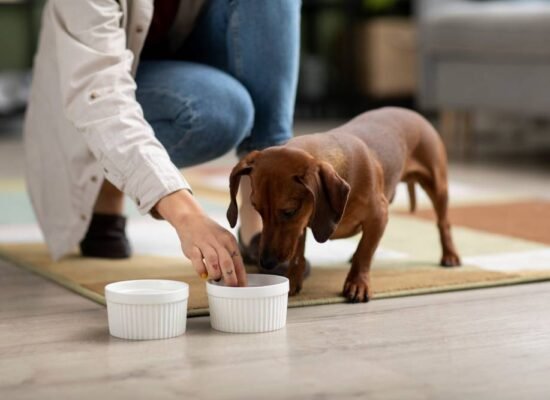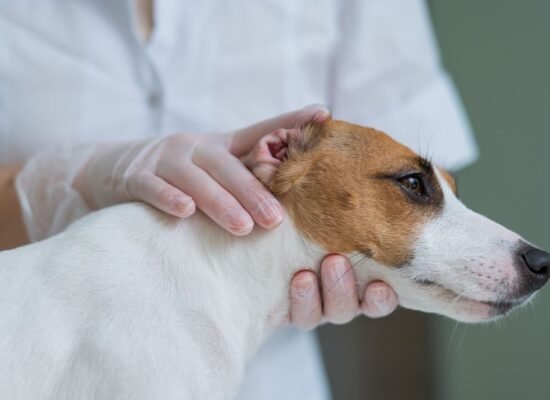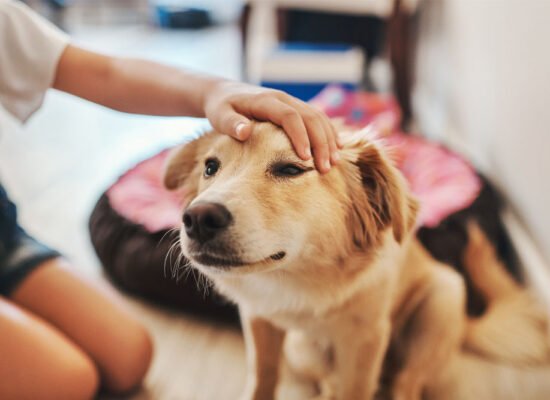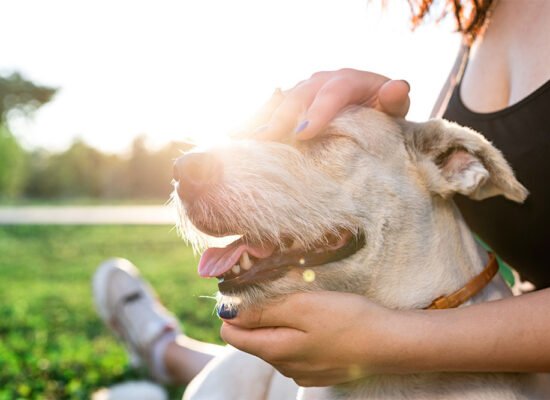Taking care of your dog’s eyes is crucial, especially when dealing with infection. Indeed, a dog eye infection can quickly become painful and dangerous if not treated promptly. In this blog, we’ll explore the causes, symptoms, and treatments of dog eye infections.
We’ll also discuss tips to protect your dog’s vision. Knowledge of these factors and when to get help can positively affect your pet’s health.
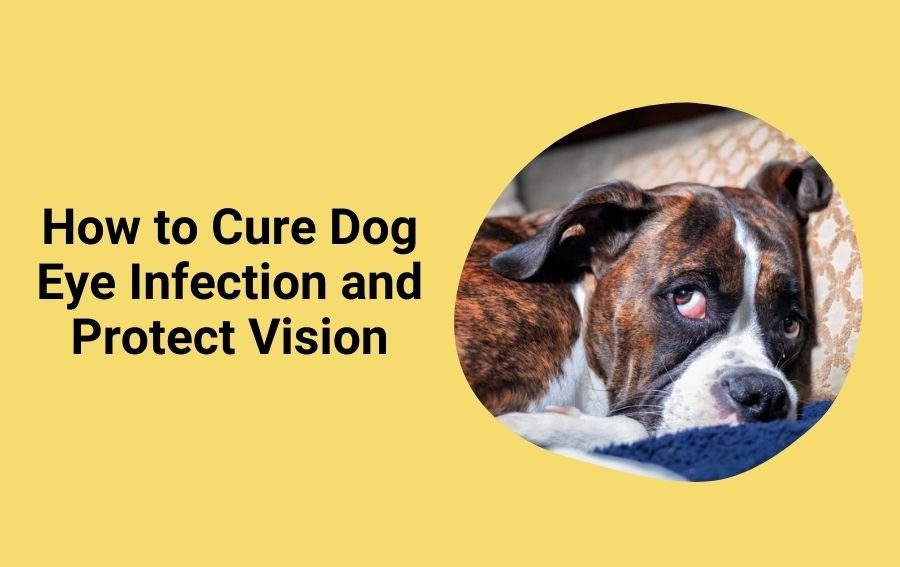
Here are all the topics we covered in this guide. You can click the links below to jump to any section:
- Dog Eye Infections And Their Causes
- Symptoms of Dog Eye Infection
- Dog Eye Infection Treatment
- VET Suggestion for Dog’s Eyes?
- When to Seek Help for Dog’s Eye Infections
- Protect Your Dog’s Vision
- Common Myths About Dog Eye Infections
- Tips Every Pet Owner Should Know
- Final Paw!
- FAQs
Dog Eye Infections And Their Causes
Dog eye infections are usually due to bacteria, viruses, allergens, or irritants. They cause irritation and infection. If left untreated, these infections may cause considerable harm, such as loss of vision. As a result, it is important to discover and address infections early in order to avoid problems.
A dog’s eye infection can be caused by a variety of factors, including:
- Eye Infections: Dogs can get them from dirt, bacteria, or infected animals.
- Environmental Allergies: Pollen and other irritants can irritate your dog’s eyes. This can quickly lead to an infection.
- Foreign Objects: Small objects such as grass seeds and sand that may lodge in your dog’s eye and lead to infection.
- Underlying health conditions: Some dogs can have dry and multifocal corneal diseases or entropion, in which the eyelids roll in. All these can lead to recurrent infections. Other health issues, such as Hookworms in Dogs, may also affect their overall health.
As such conditions change, it becomes equally important to know the root cause as part of the treatment. Now, coming to symptoms so that you can identify dog eye infection easily:
Symptoms of Dog Eye Infection
When it comes to symptoms of dog eye infections, here are some common signs to look out for:
- Redness in the Eye: The whites of your dog’s eyes may appear red and inflamed.
- Discharge: Purulent, clear, yellow, or even green secretion coming from the eye is a sign that an eye infection is present.
- Swollen Eyelids: It also leads to their eyelids becoming puffy or swollen, which intrigues their ability to open their eyes fully.
- Excessive Blinking: This is not a good sign. If your dog frequently blinks or rubs its eyes with its paws, it may be uncomfortable.
- Light Sensitivity: Dogs with this kind of eye infection will avoid light by closing their eyes in the presence of light or avoiding sunny areas.
Overall, if you can recognize these symptoms early, you will be able to take the necessary action. To prevent the condition from getting any worse, it is about time that one considers treatment.
Dog Eye Infection Treatment
Dogs with eye infections require proper medication, and it is important that the eye of the dog is cleaned well. Here are the steps for effective treatment:
- Medicated Eye Drops: Your vet may prescribe eye drops for your dog. They will be antibiotics or an anti-inflammatory to treat an infection and relieve pain.
- Eye Cleaning: It is better to wash the secretions out with the help of warm water and a piece of gauze since this will avoid the formation of a new scab.
- Veterinary Guidance: Ask your vet about the right dose and treatment time for feline chlamydia to stop it from coming back.
- Clean Dog Eyes: With a clean, damp cloth, gently wipe away any dirt or debris around the eyes.
- Minimize Allergen Exposure: If your dog has skin allergies, do not take it to areas with pollen or dust. You can also explore ways to manage allergies through Best Dog Food for Allergies.
- Use Dog Goggles: Safety glasses are quite useful, especially in areas where there is a lot of wind or dust.
Prevention is always better than cure. Consequently, if you have been active and observant, you will minimize the risk of your dog developing an eye infection in the future.
Sometimes, your vet may flush your dog’s eye to remove particles or prescribe oral medication if the infection is severe.
| Treatment Option | Purpose | When to Use |
| Medicated Eye Drops | Treats bacterial/viral infections | Prescription-only |
| Eye Cleaning with Damp Cloth | Removes discharge and soothes irritation | Daily as needed |
| Saline Eye Rinse | Flushes out minor irritants | For mild cases, the vet recommended |
| Warm Compress | Reduces swelling and discomfort | Early signs of infection |
| Veterinary Eye Flush | Removes foreign particles | Severe infections or visible debris |
VET Suggestion for Dog’s Eyes?
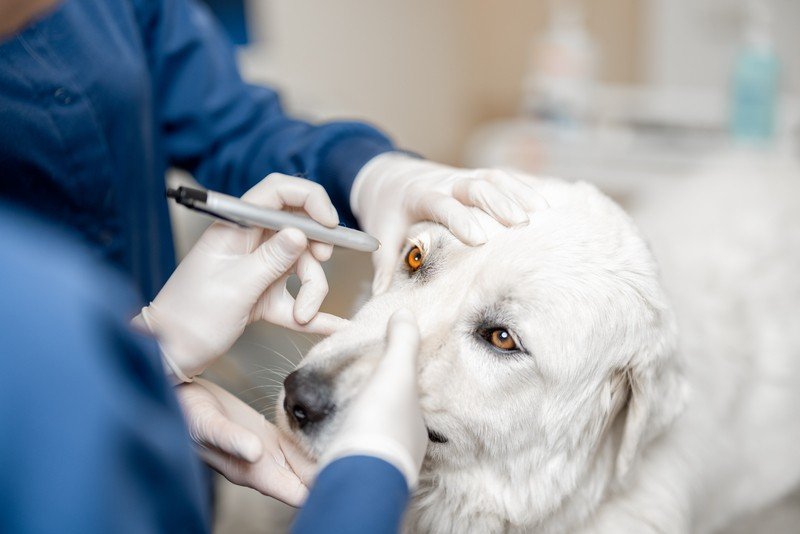
Vets suggest treatment plans based on the dog’s condition and infection severity. They also check the dog’s health and prescribe safe medication, as OTC treatments may not be enough. If your dog has structural eye issues, a procedure may be needed if the problem worsens.
When to Seek Help for Dog’s Eye Infections
While minor infections may self-limit, more severe infections need the veterinarian’s attention. You should consult a vet if your dog experiences:
- Persistent redness or swelling: If the redness and swelling do not improve after 1 to 2 days.
- Thick, Colored Discharge: Any discharge should be yellow or green, pus-like. This is a sign of bacterial infection that requires antibiotic treatment.
- Eye Sensitivity: If your dog seems bothered by light or keeps its eyes closed.
As a result, early intervention will save your dog’s eyesight and prevent any major health condition down the line.
Protect Your Dog’s Vision
Untreated dog eye infections increase the risk of permanent vision loss. If you maintain the treatment prescribed by your veterinarian and checkups on time, you can keep your dog´s eyes healthy. It is recommended to prevent them throughout the dog’s lifetime, particularly when they become old.
Common Myths About Dog Eye Infections
Unfortunately, there are many misconceptions about treating dog eye infections. For example:
Myth 1: Human eye drops are safe for dogs.
Fact: Human medications can be harmful to dogs. Always consult your vet before using any over-the-counter products.
Myth 2: Eye infections will go away on their own.
Fact: Ignoring eye infections, the consequences may be very serious, such as blindness.
Moreover, knowledge of these myths will assist you in previous pitfalls that threaten your dog’s well-being.
Tips Every Pet Owner Should Know
Some general tips that can be helpful to prevent infections are that eye maintenance is important to keep infections away. For example:
When you are feeding your dog, petting it, or even talking to it, try to look into his or her eyes to know if they have some discharge. Few breeds with extensive eye structure, such as Pugs or Bulldogs, have more chance of infections. As a result, by taking care of your dog’s eyes, you can help your dog to make their eyes always healthy.
Final Paw!
In conclusion, any dog eye infection must be treated on time in order to avoid unpleasant consequences and save your dog’s vision. If the signs are properly identified, your dog’s eyes will be healthy. Use the right meds and follow the correct precautions. Anyhow, it is wise to consult a vet to make certain that your adorable pet’s eyes are safe.
FAQs
Q1.How can I tell if my dog has an eye infection?
Some signs to check for include inflammation, secretions, pain, inflammation, and closing of the eye, as well as rubbing on it.
Q2.Can dogs get a bacterial eye infection, and how?
Yes, dogs can get bacterial eye infections when bacteria enter the eye through contact with dirt or debris.
Q3.Are human eye drops safe for dogs?
No, human medications are very dangerous. Always consult your vet before applying any treatment.
Q4.What home remedies can help with dog eye infections?
In mild saline rinses, a warm compress can be helpful in cases and offer a temporary fix for the problem.
Q5.When should I take my dog to the vet for an eye infection?
If the condition is not improving or even worsening, one should seek help from a vet to prevent such a state of affairs.


